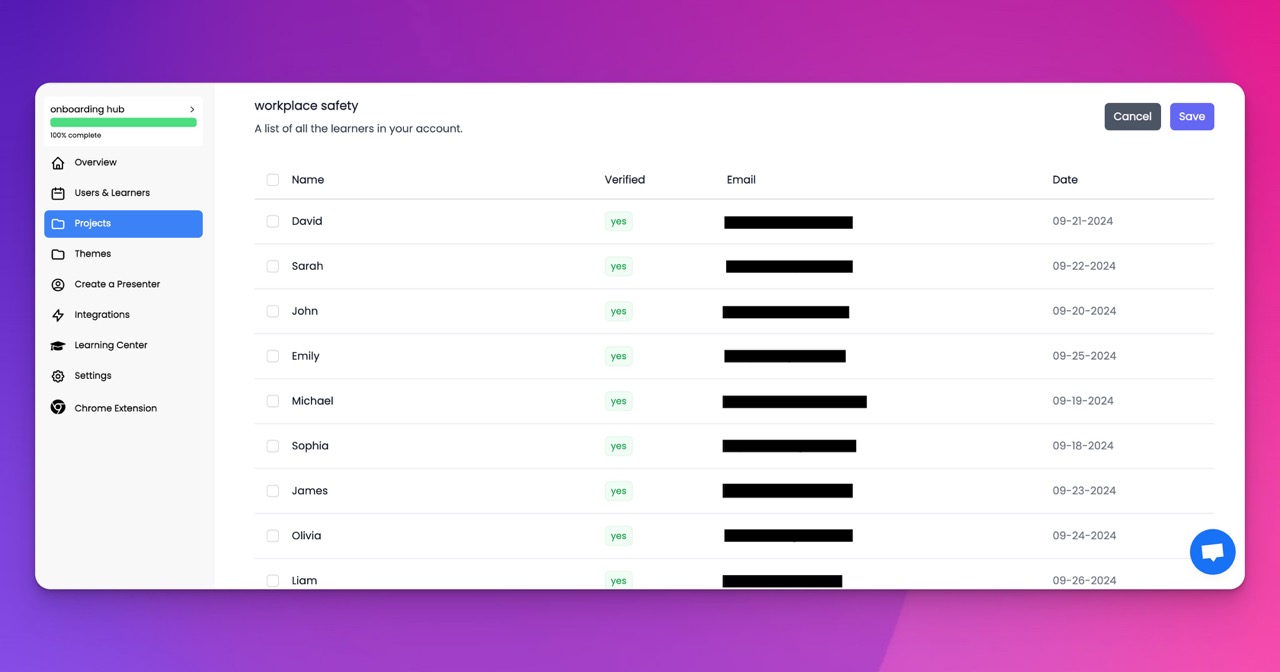🎉 Trainday now integrates with Zendesk and Hubspot 🎉 Trainday now integrates with Zendesk and Hubspot 🎉 Trainday now integrates with Zendesk and Hubspot
🎉 Trainday now integrates with Zendesk and Hubspot
🎉 Trainday now integrates with Zendesk and Hubspot
Contact
Banking
The Impact of Non-Monetary Rewards on Banking Employee Retention
The Impact of Non-Monetary Rewards on Banking Employee Retention: Leveraging Data and Artificial Intelligence for Efficient Training Courses
Employee retention is a crucial concern for the banking industry, where competition for skilled professionals is intense. While monetary incentives have traditionally been the go-to strategy for retaining talent, recent studies indicate that non-monetary rewards play an equally significant role. To maximize the effectiveness of these rewards, banks are turning to data and artificial intelligence (AI) to create relevant employee training courses in record time. In this blog post, we will explore the impact of non-monetary rewards on banking employee retention and how data-driven AI technologies can revolutionize the creation of training programs.
The Power of Non-Monetary Rewards:
While financial compensation remains important, studies have shown that non-monetary rewards can have a profound impact on employee satisfaction and loyalty. Non-monetary rewards encompass recognition, career development opportunities, flexible work arrangements, and a positive work environment. These rewards not only motivate employees but also foster a sense of belonging and job satisfaction, leading to improved employee retention rates.
Challenges in Training Course Creation:
Traditionally, designing and implementing training programs has been a time-consuming and resource-intensive process. Banks often struggle to keep pace with the rapidly evolving industry landscape, resulting in outdated training materials that fail to address employees' changing needs. Additionally, the time required to develop relevant training courses can hinder the organization's ability to respond swiftly to market demands, leaving employees ill-equipped to handle emerging challenges.
Leveraging Data for Personalized Training:
The advent of data analytics has revolutionized the way businesses operate, and the banking sector is no exception. By harnessing the vast amounts of data available internally and externally, banks can gain insights into employees' performance, skill gaps, and training needs. Using AI algorithms, this data can be analyzed to identify patterns and trends, enabling the creation of personalized and targeted training courses. This data-driven approach ensures that employees receive the training they need to excel in their roles, increasing job satisfaction, and ultimately improving retention rates.
Artificial Intelligence for Efficient Course Creation:
AI, coupled with machine learning, enables banks to create training courses at an unprecedented speed. By automating the content creation process, AI algorithms can generate course materials that are tailored to individual employees' needs and preferences. AI can quickly identify industry trends and regulatory changes, ensuring that training courses are always up to date. Additionally, AI-powered chatbots and virtual assistants can provide real-time support, answering employee queries and reinforcing learning outcomes.
Benefits of Data-Driven Training Programs:
Implementing data-driven training programs in the banking sector offers numerous benefits. Firstly, it allows banks to stay ahead of industry changes, ensuring that employees are equipped with the latest knowledge and skills. This not only improves job performance but also enhances employees' confidence and job satisfaction. Secondly, personalized training courses demonstrate an organization's investment in its employees' growth and development, fostering a sense of loyalty and commitment. Lastly, by leveraging data analytics and AI technologies, banks can optimize training investments, allocating resources where they are most needed.
Conclusion:
Non-monetary rewards have a significant impact on banking employee retention, complementing traditional monetary incentives. To create relevant and efficient training courses for employees, banks are increasingly relying on data analytics and artificial intelligence. By leveraging data insights and AI technologies, banks can develop personalized and targeted training programs that foster employee satisfaction, enhance job performance, and improve retention rates. Embracing this data-driven approach positions banks at the forefront of the industry, ensuring their employees are well-equipped to navigate a rapidly evolving landscape.
Accelerate Compliance.
Deliver OSHA-Ready Courses Instantly.
Empower your team with data-driven training solutions tailored to your industry's safety standards. Stay compliant, reduce risks, and boost productivity with AI-powered course creation.
